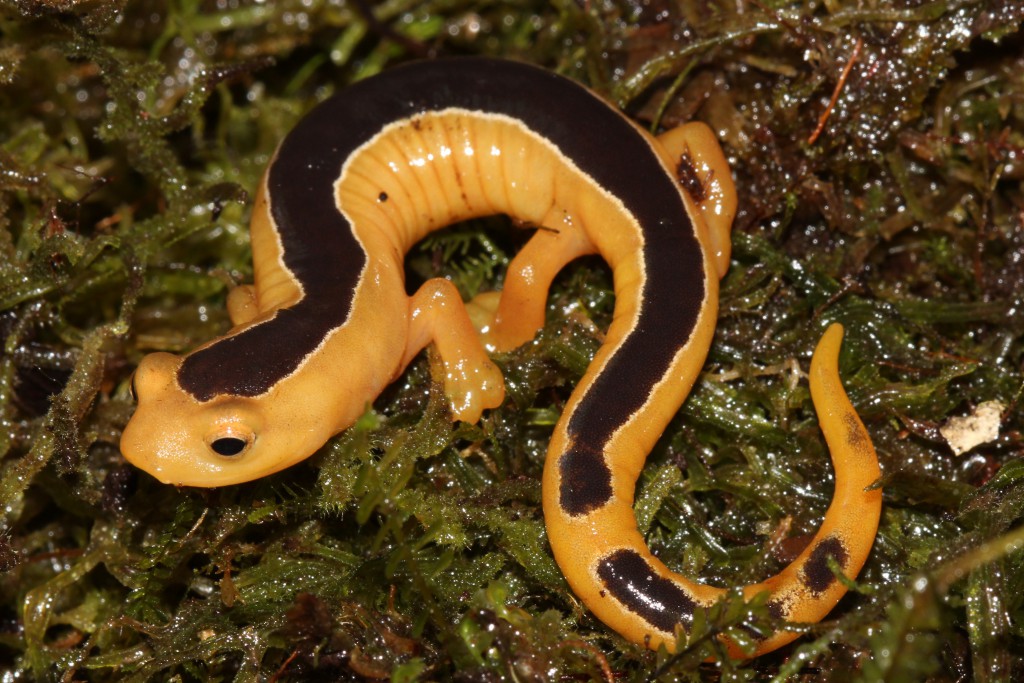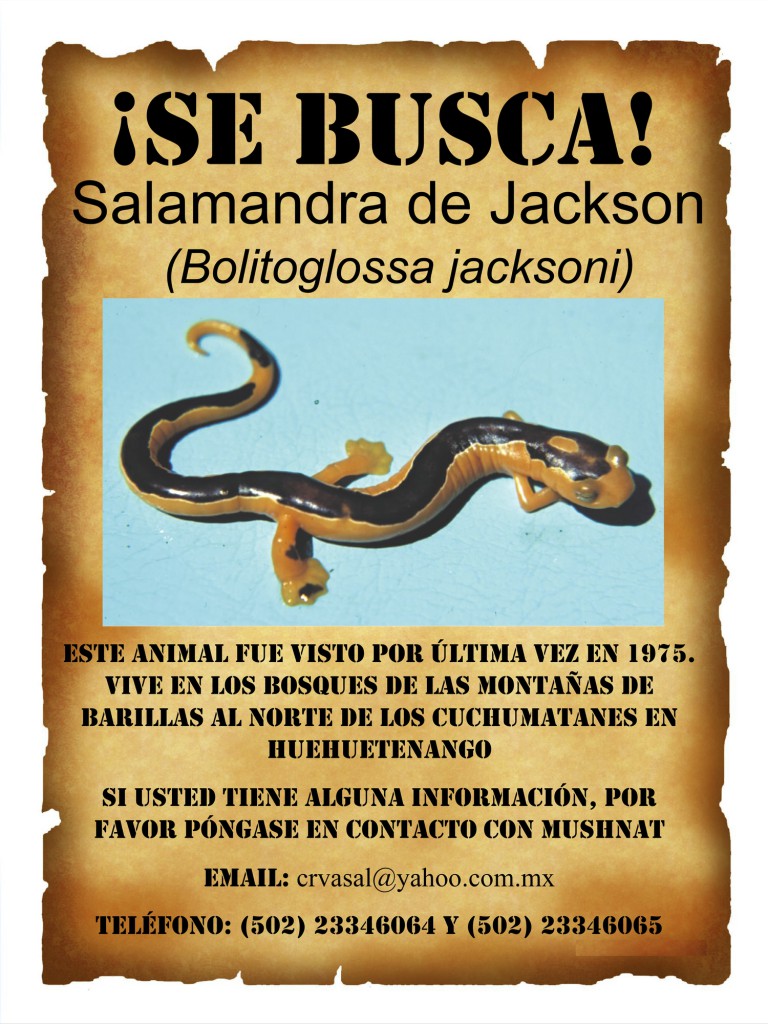Boo! Lost Salamander Reappears, Dressed for Halloween
Posted on Categories Discover Magazine

Earlier this month, a guard patrolling a Guatemalan wildlife reserve photographed a young salamander. Its glossy orange-and-black skin made it look like a Halloween decoration. But the salamander’s appearance wasn’t just seasonally appropriate—it was the first time anyone had laid eyes on the species in 42 years.
Two Americans first discovered Jackson’s climbing salamander (Bolitoglossa jacksoni) while hiking in the cloud forests in 1975. Its name came from one of the pair, Jeremy Jackson. After that expedition, though, no one ever saw the salamander again.
That made it an obvious candidate in the Search for Lost Species. The nonprofit Global Wildlife Conservation started the search after compiling a list of nearly 1,200 species “lost to science.” These include everything from mammals to fish to mysterious plants, last spotted in the 20th century or the 19th century or never seen alive at all.
From the long list, GWC selected 25 Most Wanted species. Jackson’s climbing salamander was on the list, along with a cast of creatures that could have marched out of a children’s book: pink-headed duck, scarlet harlequin frog, velvet pitcher plant, Wondiwoi tree kangaroo, Omiltemi cottontail rabbit, Miss Waldron’s red colobus. (Adding to the fairy-tale feel are fanciful paintings of each species by artist Alexis Rockman.)
Researchers hope at least some of these “lost” species are just temporarily misplaced. In 2009, Carlos Vasquez, a biologist at the University of San Carlos in Guatemala, rediscovered a lost salamander called the Finca Chiblac. The next year, he found a long-limbed salamander. Both of these animals were on GWC’s master list of lost species, and both were first seen in the 1970s by the same Americans who discovered Jackson’s climbing salamander.
But the Jackson’s remained elusive. “If it is not extinct, it is adept at escaping human attention,” read a description on the Lost Species website. Despite more than 3,000 hours of searching, Vasquez couldn’t find a single one.
The rediscovery of the two other salamanders in the same jungles was encouraging, though, so in 2015 a group of international organizations created a reserve called Finca San Isidro to protect this habitat. Four guards now patrol the area to keep it safe. Earlier this year, Vasquez held a workshop for the guards about Jackson’s climbing salamander. He showed them photos, told them what kinds of habitat the creature hangs out in, and left a poster the guards could see every day.
In October, one of those guards, Ramos León, sent Vasquez a photo. It was Jackson’s climbing salamander.
Namesake Jeremy Jackson said in a press release that he “let loose a string of expletives” when he heard the good news. Vasquez said it was as if the species had returned from extinction.
Just because there’s one salamander in the jungle doesn’t mean the species is thriving, though. GWC and other groups are now working to expand the reserve and protect more habitat for this species and others. None of the remaining 24 “Most Wanted” species has turned up yet. But they may just be waiting for the perfect season.
Images: Carlos Vasquez Almazan
